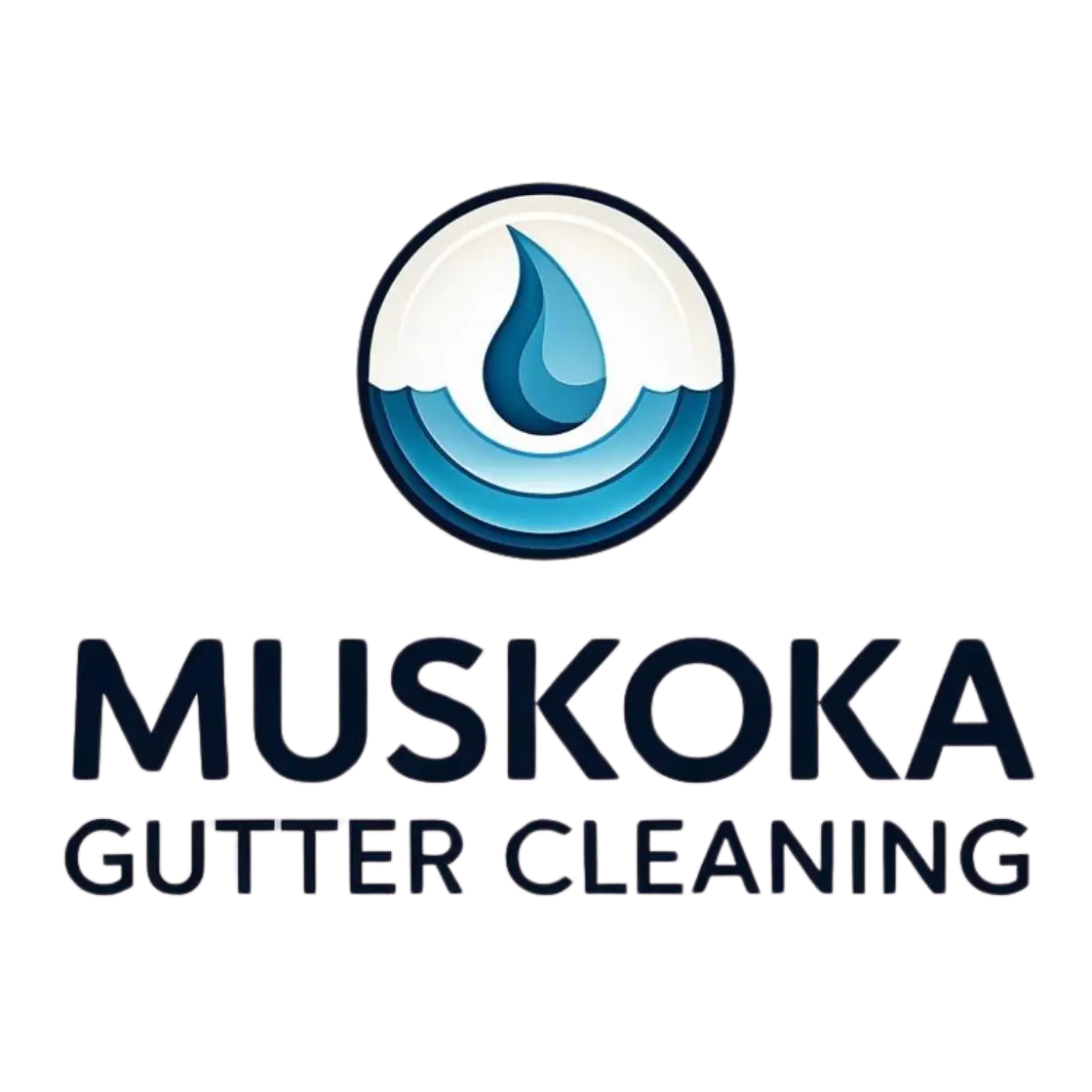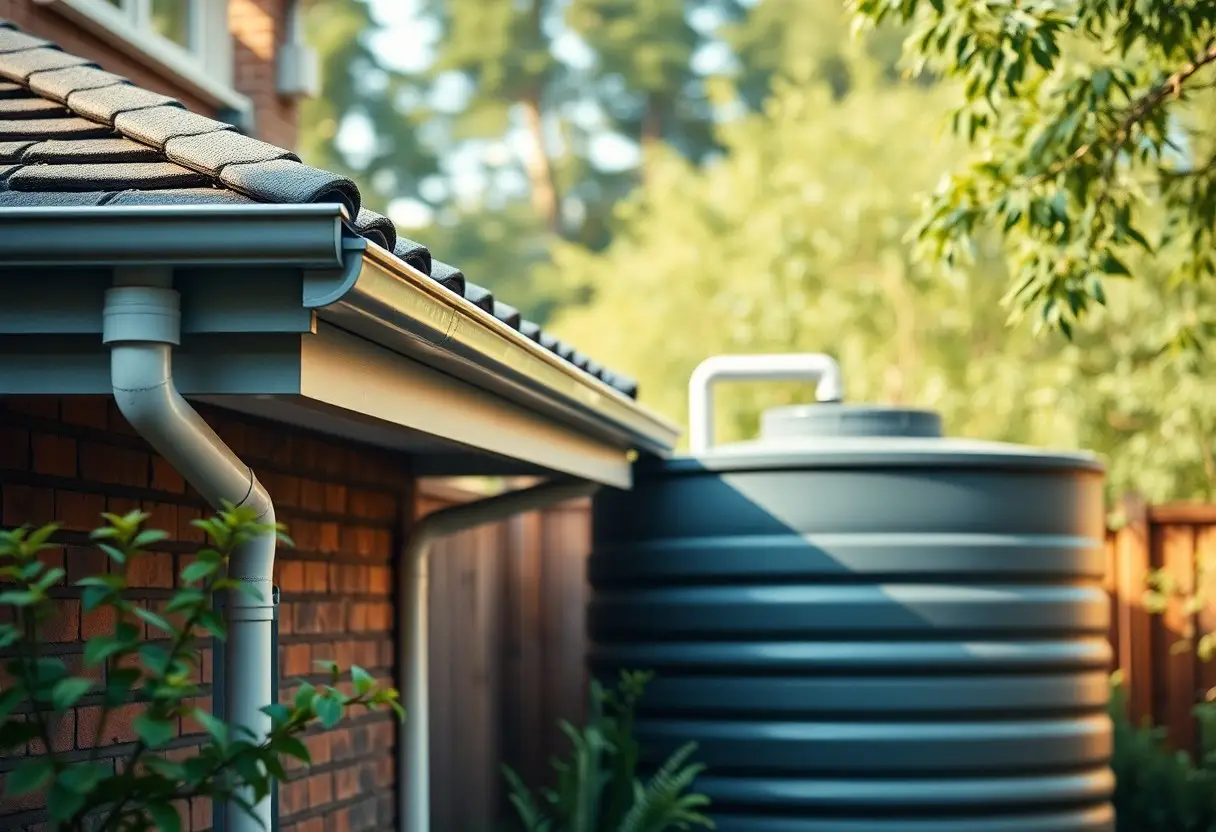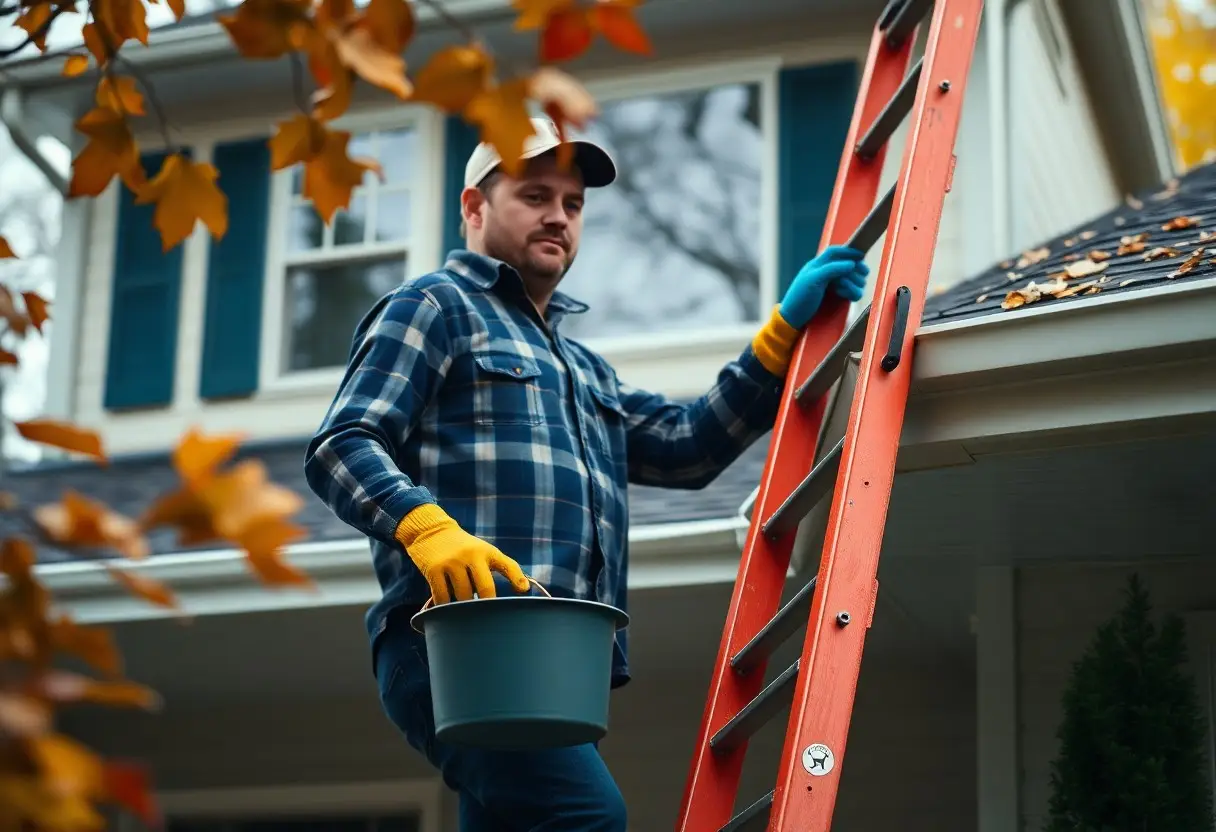It’s imperative to maintain your gutters for the safety and longevity of your home. By following these 8 steps, you can achieve durable gutter repairs that withstand the test of time. Investing time and effort into proper maintenance can prevent costly damage from water accumulation, promote better drainage, and ultimately enhance the value of your property. This guide will help you navigate through the necessary actions you should take to ensure your gutter system remains efficient and effective for years to come.
Key Takeaways:
- Regular maintenance and inspections can help identify potential issues early and extend the lifespan of gutter repair solutions.
- Choosing high-quality materials and professional installation increases the durability of gutters and reduces the likelihood of future problems.
- Effective water management strategies, such as proper downspout placement and ensuring proper drainage, are important for long-lasting gutter performance.
Understanding Gutter Systems
Before venturing into repairs, it’s necessary to understand the components of your gutter system. A well-functioning gutter system channels rainwater away from your home, protecting the foundation and preventing water damage. Familiarizing yourself with the various parts, such as gutters, downspouts, and hangers, will help you identify issues before they escalate into costly repairs.
Importance of Proper Gutter Function
An effective gutter system plays a vital role in safeguarding your property’s integrity. By directing water away from your home, it reduces the risk of foundation damage, landscape erosion, and mold growth. Therefore, ensuring your gutters work correctly can save you time, money, and stress in the long run.
Common Gutter Problems
On the topic of gutter maintenance, you should be aware of several common issues that can arise. Clogs caused by leaves, debris, or even ice can hinder water flow, leading to overflow and potential damage. Additionally, improper pitch and rust can compromise your system’s efficiency. Regular inspections will help you spot these problems early.
A buildup of debris can lead to clogged gutters, which may cause water to overflow, damaging your roof and siding. Similarly, an incorrect pitch means that water won’t flow properly through your gutters, putting unnecessary strain on the system. Furthermore, rust can weaken metal gutters over time, leading to leaks and costly repairs. By staying vigilant and addressing these issues promptly, you can maintain a healthy, functional gutter system.

Assessing Gutter Damage
While assessing gutter damage, it’s vital to take a comprehensive approach to ensure your gutters function properly and protect your home. Begin by identifying any visible signs of wear and tear, such as rust, leaks, or sagging sections. This careful evaluation will allow you to determine the necessary repairs and maintain the integrity of your entire roofing system.
Visual Inspection Techniques
Behind every effective gutter repair is a thorough visual inspection. Start by examining your gutters from the ground, looking for any home repairs, debris buildup, or noticeable sagging. Use a ladder safely to inspect the gutters closely, checking for cracks, holes, and loose connections that may require repair.
Identifying Structural Issues
Between the various elements of your gutter system, structural issues can pose significant risks. Pay attention to underlying problems such as misalignment, improper slope, or damage to the fascia boards. These issues can lead to water pooling, causing extensive damage to your home’s foundation and landscaping. Addressing these concerns early will save you from costly repairs in the long run.
Hence, when you identify structural issues, it’s important to act promptly. A misaligned gutter can result in water overflow, leading to dangerous conditions like mold growth or foundation erosion. Inspect the attachments and alignments of your gutters to ensure they are secure and positioned correctly. If you find major damage or structural wear, consider consulting a professional to address these issues effectively and prevent further complications.

Choosing the Right Repair Materials
All gutter repairs require careful consideration of the materials you’ll be using. The right repair materials can significantly enhance the longevity of your gutters, helping to prevent issues such as leaks and rust formation. When choosing materials, think about your specific needs, such as your local climate and the current state of your gutters. Ensure you choose products designed to withstand various environmental conditions for optimal performance.
Types of Gutter Materials
- Aluminum – Lightweight and rust-resistant.
- Vinyl – Affordable and easy to install.
- Steel – Very durable, but prone to rust.
- Copper – Highly aesthetic and long-lasting.
- Zinc – Durable with a natural patina.
Assume that you account for your home’s aesthetic and functional needs when choosing from these options.
Durability and Weather Resistance
With careful selection of gutter repair materials, you can ensure that your gutters remain resilient against the elements. Opt for materials that offer enhanced durability and are specifically designed to withstand harsh weather conditions. Choosing the right materials can prevent frequent repairs and provide long-lasting protection for your home.
Resistance to weather conditions like heavy rainfall and extreme temperatures is vital for maintaining your gutters’ integrity. Make sure the materials you choose have a proven track record in your local environment. For instance, materials with an anti-corrosive feature will help avoid rusting, while those with UV protection will safeguard against the sun’s damaging rays. Long-term performance hinges on these considerations, so always prioritize materials that promise both strength and resistance against degradation.
DIY vs. Professional Repairs
For homeowners, the choice between DIY gutter repairs and hiring a professional can be challenging. While taking on the repair work yourself can save money and provide a sense of accomplishment, it also comes with risks. Assessing your skills and the extent of the damage is key to deciding the best approach for your gutter repair needs.
Pros and Cons of DIY Repairs
| Pros | Cons |
|---|---|
| Cost-effective solution | Risk of injury from working at heights |
| Personal satisfaction from completing the task | Possible lack of expertise leading to improper repairs |
| Flexible scheduling on your own time | Time-consuming tasks that may take longer than expected |
| Ability to learn new skills | Potential for further damage if not done properly |
| Convenience of using readily available tools | No warranty on repairs |
When to Hire a Professional
Along your journey of gutter maintenance, you might find instances when hiring a professional is the best choice. If you’re facing significant damage, or if the repairs involve complex issues such as water damage or structural integrity of your home, it’s wise to enlist help. Additionally, if you feel uneasy about heights or lack the proper tools, a professional can ensure the job is done safely and effectively.
Repairs often require knowledge and experience, especially when dealing with potential hazards like electrical wiring or extensive blockages. Engaging a professional ensures that your gutters will be fixed properly, safeguarding against future issues. Moreover, professionals can provide a warranty on their work, giving you peace of mind that your investment is protected. Ultimately, weighing your personal skills against the job’s demands will guide you in making the right decision.
Preventative Maintenance Tips
Once again, being proactive can save you from costly repairs in the future. Implementing regular preventative maintenance practices will enhance your gutter system’s longevity. Consider the following tips:
- Inspect your gutters for debris regularly.
- Ensure downspouts are clear and direct water away from your foundation.
- Check joints and seals for potential leaks.
- Install a gutter guard for added protection.
Any effort you put into maintenance will pay off in the long run.
Regular Cleaning Practices
At least twice a year, give your gutters a thorough cleaning to prevent clogs and water damage. Remove leaves, twigs, and other debris to ensure proper water flow. This task will help you maintain a well-functioning system and prolong the life of your gutters.
Seasonal Inspections
At the change of each season, take the time to perform an inspection of your gutter system. This is crucial to address any potential issues before they escalate. Due to the buildup of debris, seasonal changes can lead to blockages or structural damage. By identifying and fixing problems early, you can avoid water damage to your home and the ensuing high repair costs. Pay special attention to any signs of rust or wear, as they can indicate a need for immediate repairs or replacements.
Long-Term Solutions for Gutter Longevity
Now that you’ve addressed immediate gutter issues, consider long-term solutions to prolong their lifespan. Investing in high-quality materials and incorporating advanced technologies not only enhances the durability of your gutters but ensures they function effectively for years to come. Regular maintenance and thorough inspections will also help you spot potential problems early, allowing you to address them before they escalate.
Upgrading Your Gutter System
Behind every long-lasting gutter system is the choice of materials and design. Upgrading to modern systems made from durable materials such as aluminum or copper can offer increased resistance to corrosion, while seamless gutters reduce the risk of leaks. By taking the time to assess your current setup, you can make informed decisions that will pay off in enhanced performance and reduced future repairs.
Installing Gutter Guards
Longevity in your gutter system can be effectively achieved by installing gutter guards. These protective covers prevent leaves, twigs, and debris from clogging your gutters, which can lead to overflows and costly water damage. By investing in quality gutter guards, you can significantly reduce the frequency of cleaning and maintenance. This means fewer opportunities for damaging blockages and leaks to develop, ultimately extending the life of your gutters. In addition, they create a barrier to pests, further protecting your property from unwanted damage.
A comprehensive approach to installing gutter guards will not only shield your gutters against debris but also enhance their overall performance. Good-quality guards can prevent the accumulation of grime that leads to rust, corrosion, and ultimately requires expensive repairs. It’s crucial to choose guards that fit your specific gutter type and local environment. This investment will not only save you time and effort in gutter maintenance but also protect your home from water-related issues, ensuring that your gutter system remains efficient and effective throughout its lifespan.
What Are the Long-Lasting Benefits of the Essential Gutter Repair Solutions for Homeowners?
Homeowners can significantly enhance their property’s longevity and curb appeal by investing in well-maintained gutters. Proper gutter repair prevents water damage, protects foundations, and extends the life of roofing. For those looking to safeguard their homes, it’s time to discover essential gutter repair solutions today.
Final Words
Taking this into account, by following these eight steps, you can ensure that your gutter repair solutions will stand the test of time. Regular maintenance, the right materials, and attentive installation techniques all play a vital role in preventing future issues. By being proactive and informed, you empower yourself to protect your home from water damage, ultimately saving money and resources in the long run. Prioritizing these practices will not only enhance the functionality of your gutters but also contribute to the overall longevity of your property.
FAQ
Q: What are the initial steps to assess my gutters for repair needs?
A: Start by inspecting the gutters and downspouts for visible damage such as cracks, holes, or sagging sections. Look for signs of water damage or pooling around the foundation of your home, as this can indicate that the gutters are not functioning effectively. Cleaning out debris like leaves and dirt is vital to get a clear view of the gutter condition. It’s best to perform this assessment after a heavy rain to see how the water flows through the system.
Q: How can I prevent future gutter issues after repairs?
A: To prevent future problems, consider installing gutter guards to keep debris out and reduce the frequency of cleanings. Regular maintenance is key, so establish a schedule for cleaning and inspecting your gutters at least twice a year, ideally in the spring and fall. Additionally, ensure that the gutters are sloped correctly to allow for proper water drainage, which can help prevent overflow and damage.
Q: What signs indicate it’s time to replace the gutters rather than just repairing them?
A: If your gutters show signs of rusting, extensive cracking, or peeling paint indicating water damage over time, it might be time to consider a full replacement. Other indicators include significant sagging, which can impede proper drainage, or if your gutters are over 20 years old and have required multiple repairs. When evaluating this, take into account the overall efficiency of your current system and whether a new installation could provide a more long-lasting solution.


